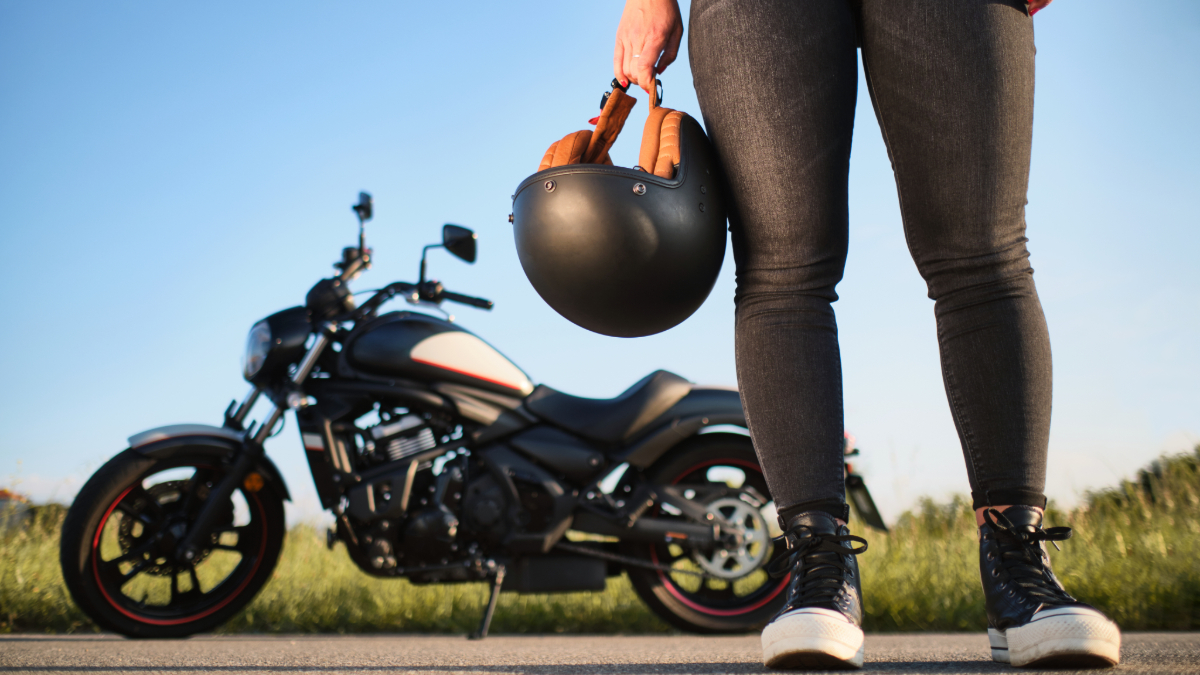
When we think about motorcycle clothing, we think about leather jackets and plastic armor. But even the allegedly brutish biker scene is turning eco-friendly. Electric motorcycles are just one way the industry is providing more environmentally conscious alternatives.
Many fashion accessories made from leather are already being replaced by vegan counterparts. But, when it comes to motorcycle gear, we need an option that does not just replace a fabric but offers the same amount of protection.
Is sustainable motorcycle clothing a thing? And how effective would it be in an accident?
Sustainable Motorcycling – Is it possible?
Sustainable fabrics are a trend. While our society is becoming more aware of the negative effects of pollution and co., alternative lifestyles like veganism are becoming more prevalent. Many people are starting to shop more purposefully, looking for the vendor with the lowest ecological footprint.
Sustainability isn’t just a niche lifestyle. Industry sectors and companies are losing money by losing out on sales to environmentally conscious customers. As a result, even industry giants are pushing for goals like a zero-emission production cycle. What has been labeled as a hippie movement and ridiculed by many for a long time, is becoming marketable, and as such, more mainstream.
Motorized vehicles have been the target of a lot of critiques. Not just the production but the use of fuel and combustion engines are a continuous source of pollution. As a result, the automobile industry has been working on electronic vehicles for a long time. Many people are well aware of electric cars like Tesla. What fewer people know is that motorcycle companies have been producing their eco-friendly alternatives as well.
All the big names, from Ducati to Harley-Davidson, have developed e-bikes. The FIM (Fédération Internationale de Motocyclisme) even started MotoE racing. Riders use specially developed electric racing bikes.
With the fuel and emissions out of the way, what about other parts of motorcycling that make the hobby less eco-friendly? Can those who are opposed to using animal products, such as leather, find protective clothing for their biking habit?
Motorcycle Clothing Materials
When you look at the clothing section at a motorcycle gear vendor like Chromeburner.com, you can get a picture of what kind of material categories motorcycle gear can typically be divided into. There is:
- denim
- leather
- softshell
- textile clothing
Looking at the available items for any of these categories, we can already see that leather is not as heavily featured as biker culture might make it seem. Textiles, denim, and synthetic materials have superseded leather in many ways. So much so, that there are several vegan-friendly motorcycle clothing companies out there, such as:
- Corazzo
- Blackbird
- GoGo Gear
- Clutch Moto
- Tobacco Motorwear
- REV’IT! Australia
- Eudoxie
Leather vs Synthetic Fabrics
The first motorcycle jacket that was created, the Schott Perfecto by Schott NYC in 1928, was made from leather. Double layers protected vulnerable parts of the body and provided insolation from the cold airflow while riding. At the time, the material was the logical choice. It is tough and abrasion-resistant. In the case of an accident, it protected the wearer from road-rash or sharp objects.
But leather also has its downsides. It is heavy, bulky, non-breathable, and non-flexible. Since 1928 we have come a long way in developing alternatives to leather that share its positive traits but alleviate the negatives. Denim and many textiles by themselves do not offer the appropriate protection from high-speed collisions with the street. In these cases, synthetic fabrics are the solution.
Dyneema and Kevlar are the most common. They are made from polyethylene (Dyneema) and aromatic polyamide (Kevlar) plastic fibers that are strong enough for military use: ballistic-rated body armor fabrics. For motorcycle clothing, they are typically woven into other fabrics, for example, cotton, to create a tough but comfortable piece of clothing.
Why Does the Material Matter?
The fabrics matter because motorcycle clothing is the only thing shielding your body from impact with other objects in an accident. Naturally, you want motorcycle clothing to be as protective as it can be. But other factors matter as well.
While protection is the most important feature, the clothing also must be practicable and comfortable. For example, a good motorcycle jacket prevents overheating. Otherwise, the building heat will negatively affect your ability to concentrate and control the bike.
The fabric also influences elements like the longevity of a piece of gear. High-quality motorcycle clothing can be costly, but it is worth the price for the protection it provides. However, it would hardly be affordable to replace it every year because the fabric degraded too quickly.
Conclusion
The production of leather has a large environmental impact. It is not just about saving animals, but also about stopping exploitative farming methods, deforestation, and many other practices.
Leather may have been necessary for motorcycle clothing for a long time, due to its toughness. Today, we can replace leather with synthetic materials. Kevlar and Dyneema create ballistic-grade protection for motorcycle riders.
When debating the question of sustainability, we must keep in mind that plastic materials are not biodegradable and can harm the environment as well. Nevertheless, the large amount of emission created by the agricultural sector for raising and keeping exceeding numbers of cattle is currently leaving a far greater footprint.




